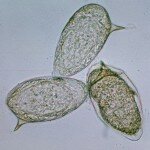By Dr. Alan Fenwick, Director, Schistosomiasis Control Initiative at Imperial College London
Schistosomiasis, which is also known as bilharzia or snail fever, is another of the most common NTDs with an estimated 200 million people infected globally, and many more at risk – especially in sub-Saharan Africa.
 The serious effects of schistosomiasis can be controlled by regular treatment of early infections with the drug praziquantel; this treatment is usually better directed at children who have recently acquired infections before symptoms can develop. Before the year 2000, praziquantel had successfully been used in China and Egypt, but it was expensive at $1 per tablet. The price today from generic manufacturers is a more affordable 8 cents a tablet. Since 2002 the Schistosomiasis Control Initiative has expanded the number of countries with control programmes thanks to support from the Bill & Melinda Gates Foundation, Legatum, and more recently the USAID. WHO has identified the need for them to take a great interest in schistosomiasis because expansion of coverage has been slower than with the other NTDs mainly due to the absence of a large scale drug donation program. It is estimated that during 2009 less than 10% of those in need of treatment will actually have access to praziquantel, despite investment by USAID and the emergence of other NGOs taking an interest in treating schistosomiasis.
The serious effects of schistosomiasis can be controlled by regular treatment of early infections with the drug praziquantel; this treatment is usually better directed at children who have recently acquired infections before symptoms can develop. Before the year 2000, praziquantel had successfully been used in China and Egypt, but it was expensive at $1 per tablet. The price today from generic manufacturers is a more affordable 8 cents a tablet. Since 2002 the Schistosomiasis Control Initiative has expanded the number of countries with control programmes thanks to support from the Bill & Melinda Gates Foundation, Legatum, and more recently the USAID. WHO has identified the need for them to take a great interest in schistosomiasis because expansion of coverage has been slower than with the other NTDs mainly due to the absence of a large scale drug donation program. It is estimated that during 2009 less than 10% of those in need of treatment will actually have access to praziquantel, despite investment by USAID and the emergence of other NGOs taking an interest in treating schistosomiasis.
During the next 5 years if the MDGs are to be achieved it will be necessary for the world to donate more money for praziquantel and its distribution so that children can be given a healthy start to their life and perform better at school.
There are several different species of schistosomiasis infecting humans, and although in every case the causative agents are pairs of worms about 1 centimetre in length, the different species differ geographically, have different hosts, and also select different sites within the human body.
One species is Schistosoma haematobium which is found only in Africa and the Middle East, and an estimated 120 million may be infected. The adult worms are only found in humans, who become infected when the larvae penetrate unbroken human skin during exposure to fresh water. The worms migrate to the liver where they mature and mate before migrating to their preferred “home” in the blood vessels around the bladder. The adult females lay many eggs which attempt to break into the urinary system leading to blood in the urine. In the longer term trapped eggs cause fibrosis in the bladder and in females cause lesions in the genital region (Female Genital Schistosomiasis). Eggs which leave the body with the urine infect only fresh water snails of the Bulinus species. Some 40 years ago most children in rural communities aged 6-12 commonly had red urine, but this worm is susceptible to treatment and in Egypt for example, S. haematobium prevalence is now under 5%.
 A second species is Schistosoma mansoni which is found not only in Africa and the Middle East, but also in South America. An estimated 60-80 million people may be infected, and some reservoirs of S. mansoni may exist in rodents and primates if the conditions for transmission are right. The adult worms in humans migrate from the liver to their preferred “home” which is the blood vessels in the mesentery. The S. mansoni eggs either break into the intestine and escape in faeces, or they are swept to the liver where they are trapped and die. The resulting scars on the liver eventually cause fibrosis, hepatomegaly, ascites, and haematemesis. S. mansoni infect only fresh water snails of the Biomphalaria species. There are no defining early symptoms for S. mansoni which means that children rarely seek treatment. Thus a proactive treatment in schools is recommended for endemic areas.
A second species is Schistosoma mansoni which is found not only in Africa and the Middle East, but also in South America. An estimated 60-80 million people may be infected, and some reservoirs of S. mansoni may exist in rodents and primates if the conditions for transmission are right. The adult worms in humans migrate from the liver to their preferred “home” which is the blood vessels in the mesentery. The S. mansoni eggs either break into the intestine and escape in faeces, or they are swept to the liver where they are trapped and die. The resulting scars on the liver eventually cause fibrosis, hepatomegaly, ascites, and haematemesis. S. mansoni infect only fresh water snails of the Biomphalaria species. There are no defining early symptoms for S. mansoni which means that children rarely seek treatment. Thus a proactive treatment in schools is recommended for endemic areas.
The third species S. japonicum is virulent and causes more serious liver problems than S. mansoni and was once extremely common in Japan and China. Today because of an aggressive socioeconomic development and treatment program, S. japonicum infects only about 1 million people in China. Large scale water projects in the Far East may lead to a resurgence unless the governments are vigilant.

One thought on “Night 7: Schistosomiasis”